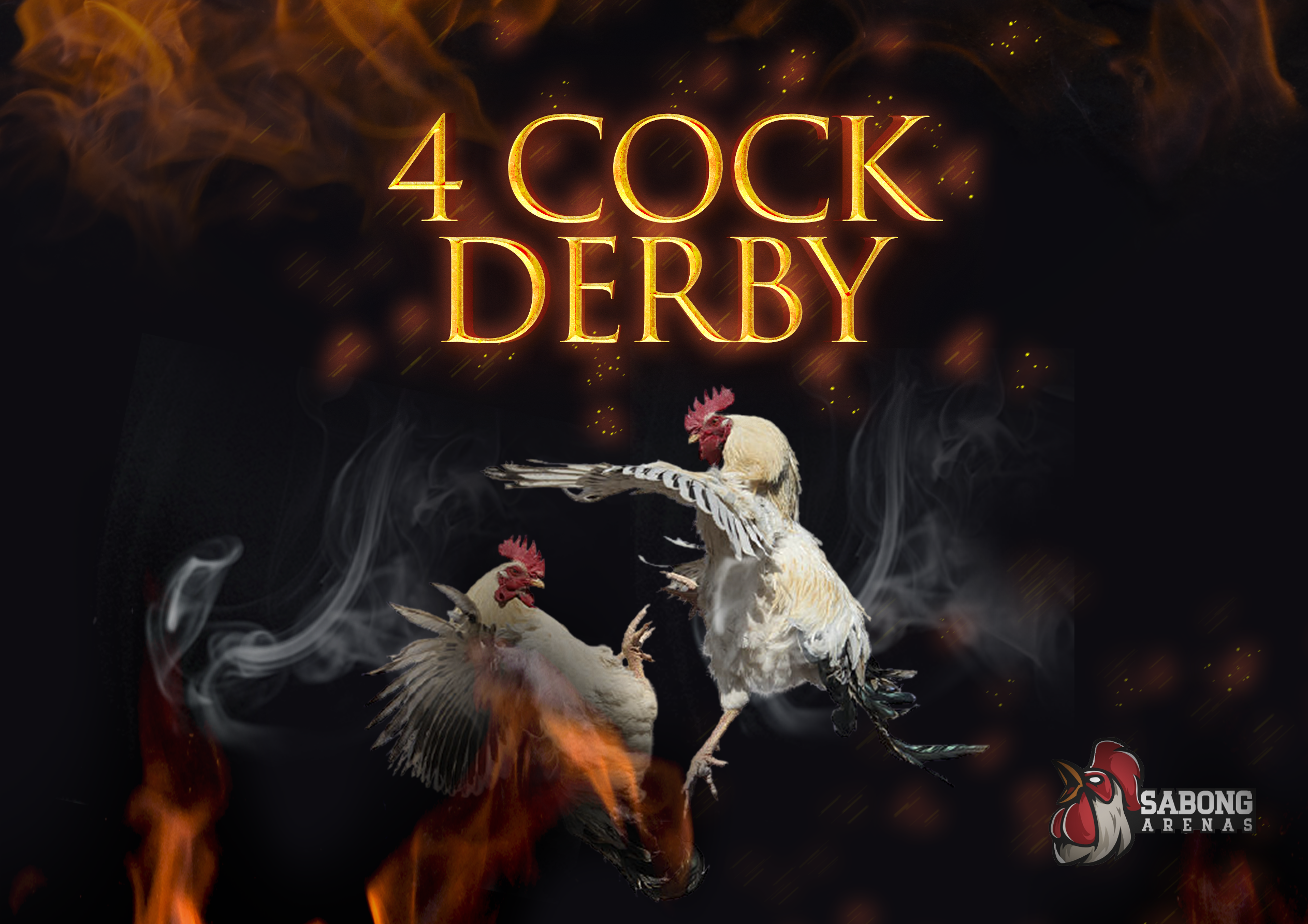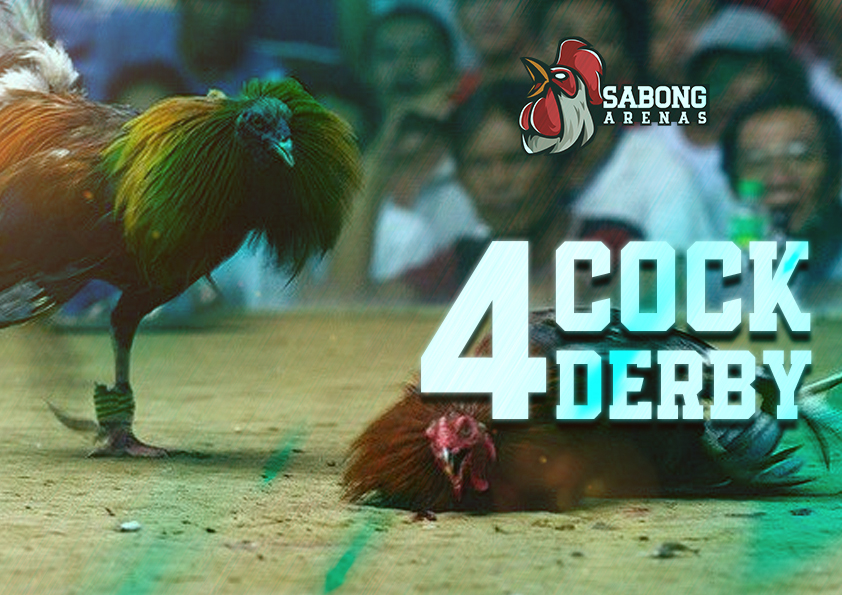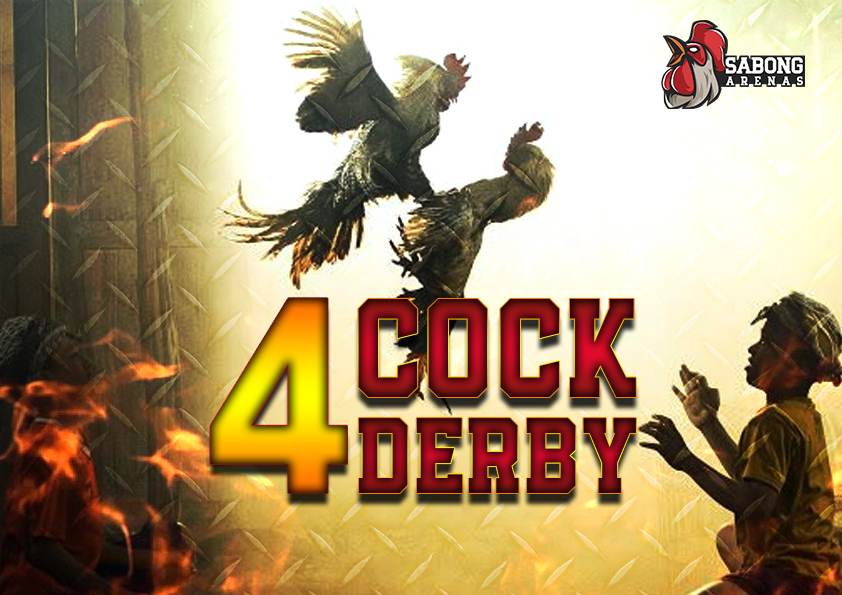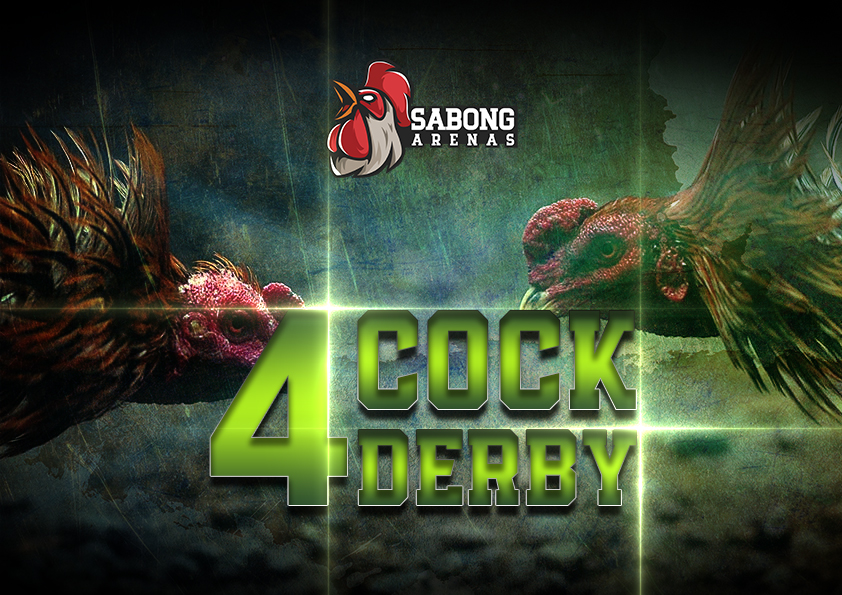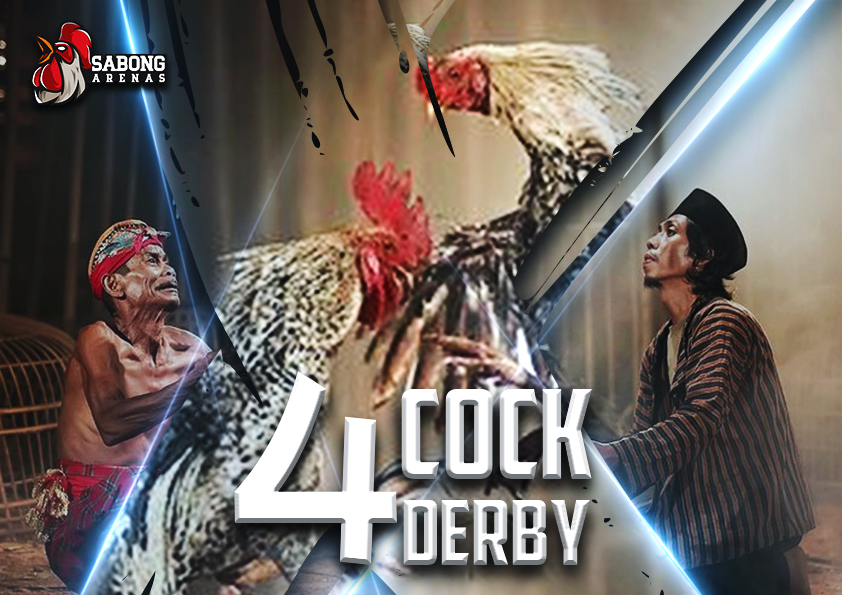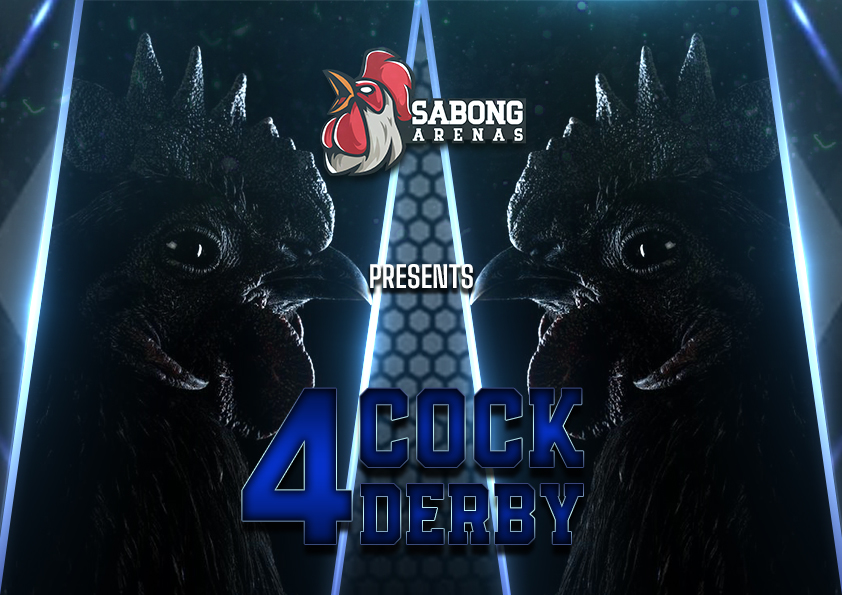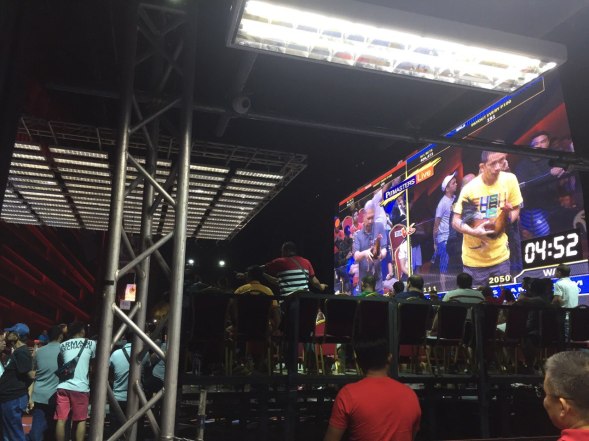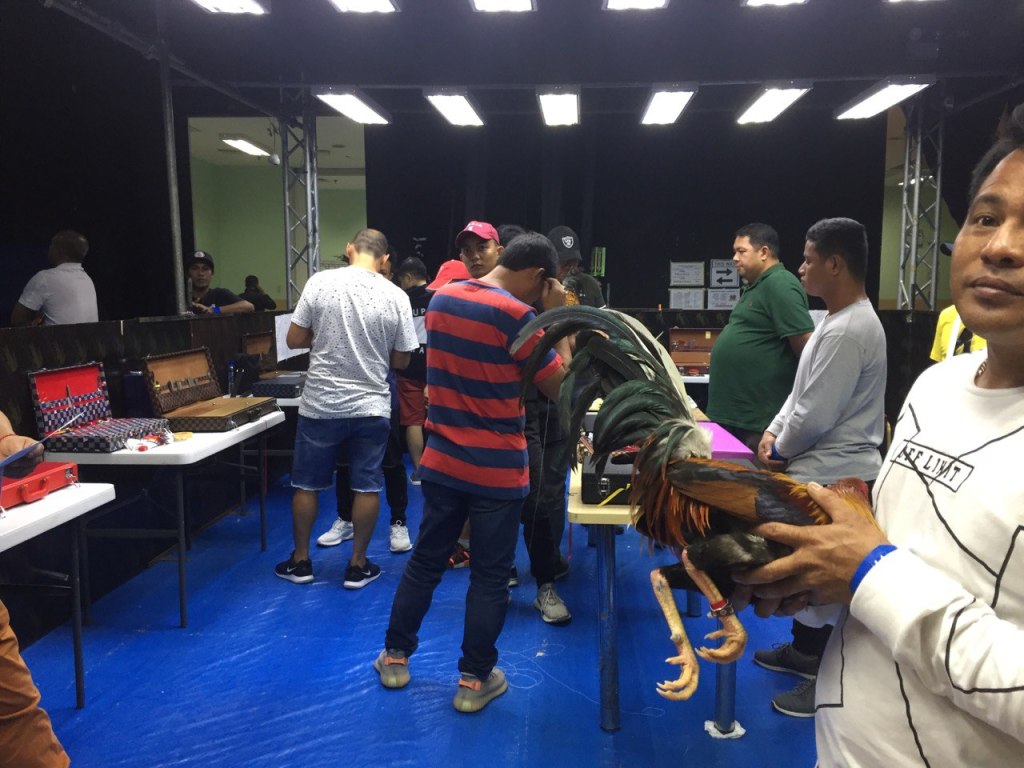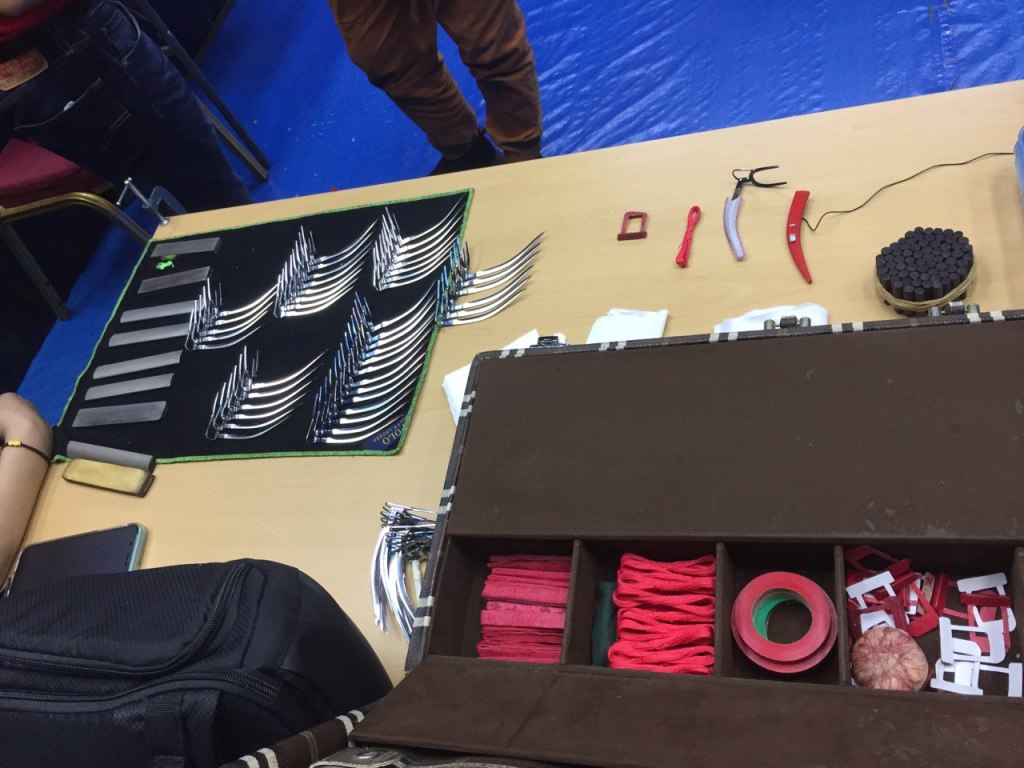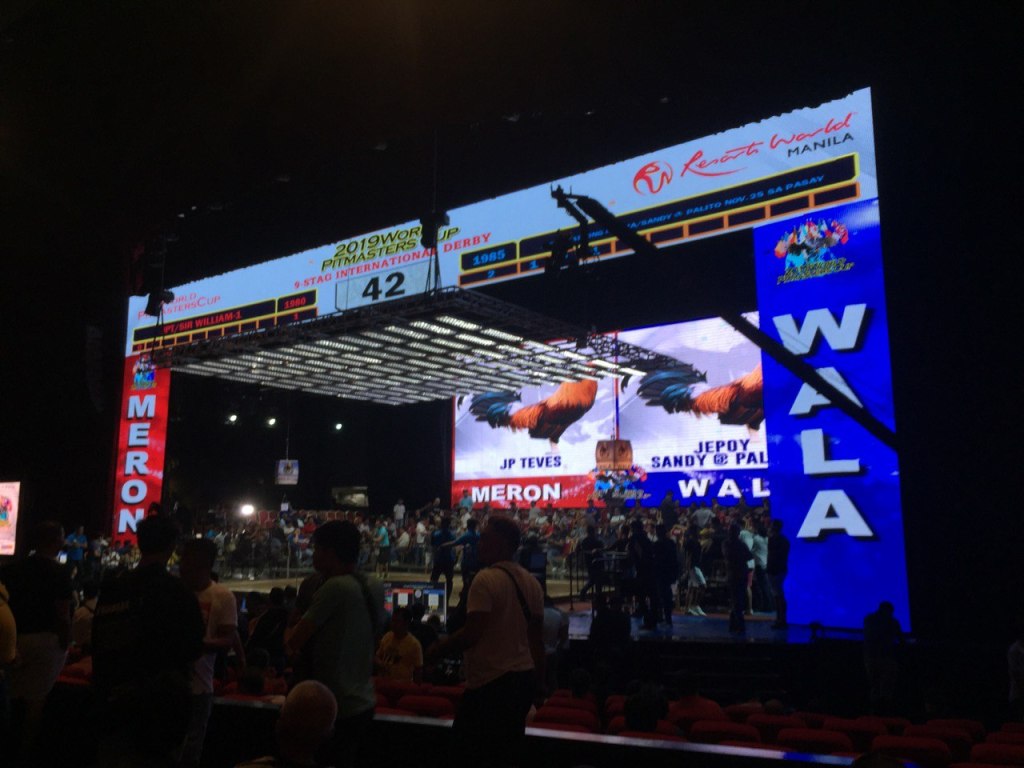Meron o Wala: The Behind-the-Scenes of Cockfighting in the Philippines (Sabong Arena)
Genre
Sabong Arena
Keywords
Meron o Wala
Article ID
00000252
Introduction to Cockfighting
The sport starts when two owners of gamecock place their respective roosters into opposite sides of the field. These cocks are equipped with metal knives or slits on their left feet and would be used to injure and eventually kill the opposing cock. These slits are so sharp that the cock handlers themselves would sometimes get injured as a result of a slight mishandling of the slits. The cocks would fight until one is eventually deemed unable to battle; this is usually determined by if the cock is unable to move after being made to stand thrice. The winner would then be given the prize pool promised. Cockfighting in the Philippines, also known as Sabong, happens in different areas of the Philippines, and both illegal and legal cockfights happen. Sometimes, these cockfights can be between family members or friends, while other times, these cockfights would merit the winner millions of pesos in cash. In the cockfighting arena or the Sabongan, the cockfights are held every week, and bets on which cock would eventually be victorious are obtained from the viewers and the cock handlers themselves by a kristo, the individual tasked with obtaining the bets. When the sabong starts, the ordeal is judged by a referee known locally as a sentensyador or a koyme who determines when a cock is still able or unable to continue to fight, the referee can also call for the stoppage of the fight at any given time.
Dynamics of Sabong Farming and Tournaments
Normal sabong tournament rules say that a point is awarded every time a cock from a respective owner wins. The owner then provides another gamecock for the next fight. The owner with the most wins gets the biggest cut out of the guaranteed pot money. In some cases, the kristos even equalize bets to avoid situations where too many people bet on the “visibly stronger” cock. Here, they allow people who bet on the stronger cock to receive only a portion, and not the whole cash prize if it wins. People betting on the weaker cock, however, are made to receive the whole cut if it wins.
The tournament also matches the cocks in accordance to their weight since heavier cocks tend to have more muscle and hence a bigger punch. Given this, trainers tend to use older cocks since it was shown in numerous cockfighting events that older cocks tend to win more over their younger counterparts. The average weight of competing cocks should range from 1.7 to 2 kilograms, in comparison to their regular weight of 1 to 2 kilograms. For more elite competitions, such as the World Slasher Cups, the required weight of cocks range from 1.95 to 2.4 kilos. For stag fights or teenage cock fights, however, the required weight ranges from 3 to 3.5 kilograms for pre-finals, and 4 to 5 kilograms for the grand finals. Once they are matched and chosen for the next fight, the cocks are made to warm up in 3×3 cages backstage, or in the cockhouse.
Now, different sabong tournaments work under different circumstances, however the major sabong tournaments work under a bracketing system, and the amount of possible losses incurred is dependent on either the tournament organizers or the derby. There are also three known seasons of cockfighting: the early bird, local associations and the olympics. The seasons represent the different areas that cockfighting takes place in. The early bird is where cocks within a region or province battle each other. Next to this is the local associations, where different provinces battle in cockfighting. Lastly, the Olympics is when cocks from different countries battle.
Gamecock also come in different forms and breeds with one of the earliest breeds being the Malaysian Old English Game, however Filipino breeders tend to lean more towards the Texas Rooster and Red Dominique, mainly for their aggressiveness, and their willingness to fight and stay in combat for longer. It is also worth noting that the lineages of roosters diversifies as generations of cockfighting continue due to the fact that breeders only get a certain amount of cocks to be trained and sent to cockfighting events. These cocks from the right side of the bell curve are then crossbred with other breeds who express similar or better traits than the original cock, and therefore a crossbreed between both cocks is born. This means that the types of gamecock that is seen today might not be powerful or fast enough for cockfighting in the next generations. Cocks are generally fed with grain, corn, milk and food pellets. When not in training, chickens are kept in separate cages, which are distanced from one another across the farm.
Roots of Cockfighting
Cockfighting has been a staple in the Filipino culture for hundreds of years. In fact, this sport has been mentioned in different forms of media and literature throughout history, an example of which would be in Rizal’s novel Noli Me Tangere and in Francisco “Soc” Rodrigo’s Sa Pula, Sa Puti. According to the Encyclopedia Britannica (2008), the art of cockfighting has long been around, and evidence of the sport being present in as far as the Indus Valley Civilization (3300 BCE – 1300 BCE). Initially, the sport of cockfighting was mainly used for religious and political purposes between the Greeks as a means of obtaining valor and honor for oneself and family, however as time passed, the sport eventually became a common pastime amongst the masses and lost its original intention of being a political and religious activity. (Thomas, 2018)
Although the sport has been traced back to as far as the Indus Valley civilization, its prominence amongst different societies in the modern world started off in Central American and South Asian countries. Cuba being one of the primary areas where the sport thrived. According to an article by the Washington Post (2015), the sport of cockfighting has become such a part of daily life that the cockfighting arena is now a common place for families to gather together every Sunday afternoon. The sport has been said to “run in the veins of Cubans”. Another article by Edge Davao (2019) writes that the sport of cockfighting is a very popular way of gambling; especially amongst the rural areas of the country. The “sunoys” or the cocks used for fighting is commonly seen in farms and houses in the countryside and these cocks sometimes fight with each other when put in the same cage.
According to Anonio Pigafetta, even before the coming of the Spanish colonizers. the art of cockfighting has already been established by the Filipino natives; this was probably brought by Indian and Chinese traders who came to the Philippines during the 12th and 13th century. He also noted that the natives often had cocks that are large compared to normal chickens that were pitted against one another. The natives would then bet a certain item or an amount of money on their cocks, and the prize would go to the victorious cock. The same article also contradicts the common notion that the University of Santo Tomas is the oldest university in the country; instead, according to the author of Cockfighting in the Philippines, Angel Lansang, cockfighting is the oldest university because it is through this sport that Filipinos learned the ways of art, sociology, economics, and even public relations. Indirectly, the sport of cockfighting has introduced concepts that will eventually be taught to the Filipinos in educational institutions.
Cockfighting is not only an Asian or Central American sport but has also been a favorite amongst prominent presidents of the United States of America. In fact, the rooster almost beat the eagle as the national bird of the United States, with the eagle only beating the rooster by a single vote. Prominent presidents who enjoyed the sport of cockfighting included Thomas Jefferson and Andrew Jackson.
Although cockfighting is now banned in several countries around the world, its influence and roots in different cultures around the world has shaped how these cultures eventually diversified and evolved. Cockfighting for decades has been a favorite amongst the general population and to other societies; the enjoyment and bonding obtained from cockfighting is something irreplaceable.
Study on Cockfighting
In this immersive study, the group has decided to do cockfighting as a main topic of interest. With its deep roots in Filipino society, the art of cockfighting is something that has not gained notoriety in the mass media, and is often seen as a novelty amongst prominent people in Philippine society like Manny Pacquaio. Although cockfighting is a sport that is normally not seen in media, there is a subtle nationwide obsession with cockfighting. Along with the cheers and betting that goes with cockfighting, other groups of people has deemed this sport as abusive towards animals; specifically the cocks involved in the matches. An article written by Johnson (2017) says that cockfighting is the dark side to an otherwise beautiful country (Philippines). “Sabong is a billion-dollar industry that intentionally showcases a bloody feathery mess that attracts large crowds and huge bets” he says. The same article concluded that the sport of cockfighting will not leave the Philippines anytime soon because both the people and the government benefit from the income generated from the sport. In fact, the government aids in the construction of these grand stadiums seeing this as a good source of income generation for the country. The government also obtains tax money from the winners of the sport, which allows for more budget to be placed towards higher prize pools and more grand stadiums for the sport. Farmers in the Philippines themselves take pride in the cocks they train and breed, with certain farmers being more reputable than the others for their quality fighting roosters.
Given this, the experience would showcase the true scale of cockfighting in the country. In rural areas, this sport has been an obsession and even politicians from these rural areas participate in the sport, hoping to win the prize pool they themselves put in place. According to roughguides.com (2019), cockfighting is popular in the Philippines because this represents the national passion for brevity and a quick payoff, a trait called ningas cogon or Cogon grass being burned quickly and ferociously. Part of the appeal of cockfighting is also in the prize money given with common prize pools ranging from P300,000 to as high as P10,000,000.
Sidelines of the stage.
Meron vs Wala
In sabong, there are two sides of the corner where the cocks can be seen before the official fight starts. This is called the Meron and the Wala. To determine who is deemed the Meron and the Wala, the organizers simply have to look at which cock has the higher amount of money bet on it. This cock would be the one placed on the Meron portion of the arena. This means that the cock in the Meron portion of the arena is the cock that is deemed the most likely to win by the people betting in the sabongan. After this, in order to balance the bets out, a Matador would call out the bet indifference to the crowd and a guy would shout the betting odds take down the bets that the crowd would place on the Wala to balance out the pool of money. After which the Matador would shout “Larga!” to signify the start of the match. This means that although the Meron might be deemed the favorite, it is not necessarily what the crowd thinks and the crowd might banner under the Wala cock. (sabong.net.ph, 2015)
From Left to Right: Sabina Manlutac, Mr. Joey Sy, Katrina Barin, Gaby Mendiola, CJ Santiago, Nikki Siasoco
Key Informant
The group’s key informant boasts several contributions to the sabong industry in the country. Sent as a delegate of the Marikina Valley Cockpit to the formation of the Philippine Gamefowl Commission in 1974, Joey Sy founded the Rizal Gamefowl Breeders Association and is currently the Charter President of the said association for the past seven years. For five years, he was also part of the Board of Directors of the Federation of Gamefowl Breeders Association, where he promoted gamefowl breeding as a cultural, recreational, and tourism activity. In 2015, he won the World Slashers Cup, hailed as the “Olympics of Cockfighting” as a Solo Champion. Presently, he is a national elite endorser of Thunderbird Feeds and is the host and co-producer of the nationwide telemagazine program “BAKBAKAN NA,” aired on TV 5 every Sunday from 9:00am-10:00am.
With his extensive knowledge and experience in the industry, he was able to impart not only historical information about cockfighting, but also professional commentary about the matches. His presence enriched the experience as he gave the group access to the cockhouse where the stags are kept prior to the fights. In this area, only authorized people are permitted to enter for security reasons. It is in this same area that the whole group was able to watch the fights from a satellite screen as the caretakers were preparing their stags for their fights.
Expectations
The group had their own expectations before heading to the event and it was not a surprise that some of them were not met. Initially, everyone was expected to be able to watch the cockfights, but due to the age restrictions the group was not advised about, they resorted to viewing the sabong from behind-the-scenes. These age restrictions were in place because of the use of the New Performing Arts Theatre in Resorts World Manila as the venue. Resorts World is known for their casinos and those establishments usually have an age requirement of at least 21 years old. If the sabong had taken place in a regular cockpit area, the group would have most likely been able to watch the event in the audience area. The observers expected the attendees to be in a more casual attire like shorts and slippers since it can be inferred based on prior research that majority of sabong attendants are from the Class D and Class E. In reality, their outfits leaned towards a smart casual look with the presence of pants and closed toe shoes. The researchers also assumed that there would be more women in the event than observed. When Sabina entered the area, she noticed that there were little to no women with approximately 3-4 only in the arena. This lack of women can be due to their uninterest in the sport or the steep price of the tickets.
The group also noted the scale of the event but it was not expected that the 2019 World Pitmasters Cup 9 – Stag International Derby was the cockfighting counterpart of the Olympics. The observers thought that the set up of the cockpit would be arena style with the spectators surrounding the fighting grounds. These were the usual circumstances in cockfighting. Instead, the layout was done in a theatre style with the cockpit in the front and the majority of the spectators in their seats watching from the screen. Only the ones who bet large sums of money, also known as high rollers, were situated around the actual cockpit. The group also believed that the cost of entrance and the minimum bet for the competitions would be less than they actually were. The ticket was assumed to be 500 pesos, but in reality it was worth 2,300 pesos. Luckily, the informant was very influential and was able to provide free entrance for the group. Participation was also expected through the process of betting, with some members who prepared a small sum of 100 to 200 pesos to partake in this experience. But, it came to the researchers’ attention that the minimum amount that could be bet was 55,000 pesos and the maximum bet was 26 million pesos. This shows that cockfighting is not just a form of entertainment for Class D and Class E since the steep asking for the bets and the price of the entrance ticket assumes that the majority of the attendees are probably from higher classes since they can afford to pay for it. Overall, the researchers assumed that the event would be like a normal sabong but in a grander location. However, it can be seen that the change in the environment from its typical roadside locations brought upon some adjustments made by the participants who had to adapt as well.
Based on this, it can be said that cockfighting in the Philippines encompasses a wide range of classes and it spikes an interest in people from all walks of life. The very fact that an event as grand as this one is held only furthers this idea.
Experience as a Participant of the Event
Once the group arrived at the entrance of the event, they immediately felt out of place and the people around the vicinity, including the event staff and other attendees treated made it more apparent. The cockfighting event attended was a part of the Quarter Finals of the 2019 World Pitmasters Cup 9 – Stag International Derby that was held at the New Performing Arts Theatre, Resorts World Manila. The event started at 4:00pm, but it went on for the entire evening and ended at 1:00am. Upon entering the vicinity past 6:00pm, the group was immediately questioned as the minimum age requirement for casino entrance is 21 years old. Due to unforeseen circumstances, most of the inferences about the attendees of the event are based on observations made as they entered and exited the event. The ethnography, therefore, takes a behind-the-scenes perspective on Philippine Cockfighting.
Only Sabina, the relative of the key informant, was allowed to enter the actual venue that was a makeshift one as the theater stage was transformed into a cockpit. Onstage, an audience surrounding the pit were the main betters. This group of people was separate from the betters seated in the orchestra area. The fact that the seating capacity was nearly maxed out, with nearly 1,500 attendees, is telling of the prevalence of sabong in the country. When the observers arrived at the venue, they noticed that the general audience entering the event were male and their ages most probably ranged from mid 20’s to early 50’s. The strictly enforced dress code for the event did not allow slippers and tank tops for men. This was followed by the participants as most of the men came in regular and everyday clothing. Noticeably, the participants for sabong who were entering the arena were staring at the group because the group was primarily composed of young women and this in itself is a strange occurrence in an event like this.
In the arena, kristos or bettakers were surrounding all sections of the orchestra, preparing to take the bets of every person. Interestingly, they held no sheets of paper, directories, or lists that contained the names of the attendees. This implies that they remember how much each person bet, when they bet, and for which stag all by memory. Given the scale of the theater, most bills were thrown across the room for faster transactions. Consequential to this are loud conversations and a rowdy crowd. The room would only be silent throughout a match averaging to take about 3 minutes each. There were matches that lasted less than a minute and those that lasted more than 5 minutes. This is primarily why a lot of people have grown interest in stag fighting. Since the chickens are younger, they are easier to train for cockfighting. Stag season is increasingly popular in the country as it is the first of its kind, according to the informant. The chickens are strategically bred to be ready for fighting at this time of the year, with “handpicked” lineages of parents that have characteristics of high flight, vibrant colors, strong legs, and even longer wings.
Though it can be said that cocks are the only ones fighting, hens play a big role in the success of the matches given the influence of their genetics over their offspring. As explained by the informant, a breeder himself, more characteristics of the hens are passed on from the mother than from the father because of the number of chromosomes paired during crossover. There are hens that produce “champion offsprings” due to this as well. This was seen in the amount of strange looks and glances we received from participants, passersby and even official organizers of the derby from the moment we got there until we left. This was not a surprise since their demographic typically comprises of older men and the group is made up of mostly teenage girls. Also given that this event was international and at a large scale, the presence of the group must have been especially strange for them. In spite of this initial feeling, the presence of the key informant made the group feel more comfortable since he was very influential and a big name in the cockfighting industry. After the complication regarding the age restriction at the entrance of the main event, he led the group down to an obscure entrance which led to the cockhouse.
Initially a parking area, the cockhouse served as a warm-up pen for cocks to get ready in. This secluded area guarded with security members is off limits to the general audience as only authorized people are allowed to enter. Since the cocks here have not yet had their matches, this is where their weights are recorded and their “meron o wala” groupings are assigned. In the cockhouse, a satellite viewing screen was also present not only to keep track of the fights done but more importantly, to know which cocks have won. Caretakers held their cocks on one hand and a copy of the program on the other, highlighting the groups that have been successful in the previous fights. Since the cockhouse was a temporary one, it was made of light materials like black cloths, tarpaulins, and plywood measuring a 3×3 area. Cocks are separated individually for feeding and for training and have a caretaker assigned to them. This extra security measure ensures that there are no trespassers who may try to poison the cocks enter the area because high amounts are at stake for each match. Another interesting feature of the cockhouse was the pagamutan or the emergency room for the injured cocks. Attending nurses and doctors are present in this area for first aid emergencies.
With the group being present in this prohibited area, the members initially got questioned as to how they got access to it. After explaining that they came with the key informant, the stares directed towards them moved back to the cocks that needed to be attended to. This shows that the cocks are of utmost priority in this area, and that the importance given to their welfare before the fight will translate into their performance. It was obvious that the caretakers were unbothered by the presence of the group as they were focused on the fights on screen.
The Application of Ethnographic research in the Context of Sabong
An ethnographic research is not merely observing the occurrence that is happening but there is also an involvement part for the researcher to engage and participate in the activity at hand. This also allows the researchers to get a feel of what the people involved in the activity usually experience and understand the behind-the-scenes and insides of the activity that cannot be manifested if it was just observed. Observation makes it apparent that the researchers are invaders and outsiders and not a part of the normal scenario, by introducing them in the scene through participation, it may create a disruption in the process and occasional staring from the usual people in the scene because the presence of the researchers was unusual. Observation from an outsider point-of-view is very prone to biases. Prior to the observation, the researcher would have his or her own biases towards the activity being observed and there will also be expectations. With this, during the observation proper itself, there is a possibility that the researcher would miss out on certain details because he or she was too focused on looking or watching out for the expectations they might have from the beginning. The biases of the researcher may be apparent with the way he or she writes about his or her experience. They would either focus on one specific instance that caught their attention and neglect other parts that they did not deem as necessary or as important than what they were highlighting. As mentioned, there is a tendency to miss out on certain details and not understand the meaning of the activity or situation being observed. Observation is a one-way method in gaining insights because the results of this would greatly depend on what perception the researcher has and where he or she mostly focused on. Through participation or ethnographic research, it creates a more in-depth understanding of the situation and the relationships of the people involved because the researchers get to see them interact and talk with each other in more closer method. An observation would miss out on small but significant details but personally experiencing it would help them notice the little details. From the sabong experience, although the researchers were not able to fully participate in the game itself due to obvious and previously mentioned constraints, visiting the cockhouse where the cocks were prepared and kept before the game allowed the researchers to have a behind-the-scenes experience and knowledge on what happens before and after a sabong match. The duration of the sabong match was observable through the television screen and was also explained by the key informant on what kind of cock was fighting and the mechanics of the game.
The presence of a key informant who has a personal connection with the activity at hand provided essential data and information that are beyond what online sources can give. For an activity that has existed for centuries, an insider who is very involved and can be considered a prominent figure provided insights that explicitly defines the mechanics of the game and at the same time describe what happens in the behind-the-scenes. Considering that the sabong event the researchers attended was not the typical one, additional insights on how the activity has evolved through the years provided more insights on how involved those who patronize sabong are. With the involvement the key informant had with the event itself, the researchers were given the opportunity to view the cockhouse which according to the people in the event was off-limits to outsiders because there is a possibility that the lives of the cocks that would compete would be compromised. The security that surrounded this whole event showed how high the stakes are and how serious the people involved in this business. The position and influence that the key informant provided gave the researchers the rare opportunity and experience to understand and in a way involve themselves with the activity. There was a sense of superiority the key informant had with the people working for the event. This showed the dichotomy between their involvement and contribution to the sabong event. The overall interaction observed in the cockhouse was very minimal due to the people having their own work to do and also because the sabong match happening is being viewed through a television. Additional information such as the difference between a cock and a stag and the classification of cocks based on its color was additional information shared by the key informant. Surprisingly there was an emergency room with trauma doctors prepared for the cocks once they finish their fight, something the researchers did not expect existed.
Research usually includes questionnaires and interviews to get data from participants or experts of the certain field being researched on. Questionnaires and interviews create a standard and structure to follow to ensure that the data and information that will be received would be within the same scope and would be adequate. This structure is the barrier that hinders the researchers see beyond what they want to know based on their expectations. This is what participant observation is best at. Experiencing the activity at hand and participating in it would allow the researchers to generate more data about the activity itself and have more questions to ask the key informant or people who are experts in the field being researched. Insights would also be generated which is essential with the succeeding methods of the research. Experiencing the activity would make the researchers feel the atmosphere and general feeling of the activity from the perspective of people involved. Similarly, the culture and the kinds of people who participate would be manifested. In terms of the sabong event that was attended to, the observations the researchers had generated the questions that the researchers asked the key informant. The interview conducted was not a structured and formal interview where the questions asked were prepared beforehand, the questions that were asked were based on the questions and curiosity that arose upon experiencing and observing the event. This allowed the researchers to attain supplement information that would explain their experience.
Although limiting in the actual aura of experiences, interviews and questionnaires still serve as useful methods in retrieving other types of data. In the context of cockfighting, interviews and questionnaires become most helpful in gathering quantitative and technical information, which require more precision. Quantitative data includes the statistics of fights, such as the likelihood of a certain rooster to win against the other. Other important quantitative data includes bets; this measures the amount of money that one may gain or lose, reflecting the overall circulation of money that takes place. The monetary data obtained from a certain arena and season of cockfighting can be further averaged, and later used as a point of comparison to other areas and times of the year. Quantitative data also covers the weight and age of cocks to be eligible in certain tournaments. Other technical data that can be obtained through questionnaires and interviews are the processes and costs of farming, training and caring for the cocks. This starts with first obtaining information on what particular breeds are selected and imported for cockfighting. This data should then extend to what particular food and how often they are fed, as well as other technicalities of farming. Other information necessary to obtain through questionnaires and interviews are the cocks’ training styles, as well as the frequency of the preparation it undergoes. When a particular rooster has taken part and won in combat, information on what processes and costs go into its healing and recovery should be covered. Lastly, questionnaires and interviews are applicable for the further enhancement of knowledge on the history and background of the sport.
Other than the information the researchers retrieved, new insights on the contemporary world have also emerged from their participation in this certain event. The first insight is how the contemporary world is shaped by historical and social transformations. It was mentioned that cockfighting has been present even before the Spaniards arrived in the Philippines, as seen by Pigafetta’s accounts in the 1500s. Today, cockfighting is still built on the same structures and mechanics. This sport, however, has been modified to fit modern times, which is comprised of different social spaces and actors. This is seen in how cockfighting has lost its religious purpose, and served more as a common pastime activity and eventually as a source of income for some. It is also evident how cockfighting has evolved in such a way that technological advancements today can provide for more effective ways of feeding, training and healing for cocks; this is mostly seen in relatively new grains and vitamins given to the cocks.
The second insight gained from this event focuses on the complexity of the contemporary world. Cockfighting exists in a few of the many cultures that are present within society. A single culture cannot make up the entirety of the contemporary world. Numerous cultures interact with one another, and subsequently impact society as a whole. These cultures may not always easily present themselves to outsiders; it is possible that some are more hidden than others. Although this particular culture, which has cockfighting embedded in everyday life, may not immediately identify with the researchers, they understand that it is still one that should not be faced with ignorance. In relation to this, the final insight is centered on how the researchers have realized their role in the contemporary world. Because they have become aware of the presence of other cultures, it is now their responsibility to maintain this type of consciousness. It is not a question of discovering which culture is more superior or better. Rather, it is with the realization that every culture is interconnected and interrelated that the researchers may be able to significantly contribute to society. Even if the culture they observed was not their own, it does not take away the fact that this belongs to someone else. Therefore, imposing the values of their own culture defeats the whole purpose of studying a culture unfamiliar to them. By taking others’ perspectives into account, they are more capable in widening their views on the world and creating actions that are inclusive to others.
Finally, these insights can be further enriched through the application of Social Science 12 concepts. The primary concept applied to the analysis of this activity was that of ethnography. By understanding and utilizing the method itself, the researchers were able to attain in-depth knowledge on the topic. Participant observation, more specifically, was at the core of understanding the culture of a sabong. Through this, the researchers were able to study the activity through the eyes of its own members, without any filters or biases. Not only were they able to obtain information on the history and dynamics of the sabongan itself, but they were also able to experience the actual atmosphere and study the relationships of the people present. The ethnographic method allowed the researchers to either validate or contradict their own expectations during the event itself. Because of all these, the importance of ethnography was duly emphasized.
In relation to ethnography, the concept of cultural relativism was another focus of the activity. This connects mostly to the aforementioned insight, which tackles how the world is formed from multiculturalism. Without cultural relativism, the researchers would not have been open to going through the process of ethnography itself, or participating in the actual sabong, therefore impeding their ability to obtain the needed information. This also connects to the third insight mentioned, which explains the researchers’ responsibility to keep themselves aware of their role in the contemporary world. Without all these, the researchers would have not been able to be aware of other cultures that exist within their own country; because they learned about a significant part of their culture, they were able to embrace their own cultures more.
Another Social Science 12 concept applicable to this particular activity was the concept of gender. Although this was a minor application to the researchers’ analysis, the observation that only a few women were present at the event can possibly represent their actual role in the culture of cockfighting. Because their role in cockfighting can be seen as insignificant, this particular image could have propagated to their roles in other cultures. Since sabongs are widely popular in the country, it is also possible that their unimportance in this culture ultimately influenced and created an impact on their status in society itself.
On the topic of power relations, other applicable concepts were those on the economic and political systems. Since sabong is widespread in the country, as well as directly related to money, it is no surprise to see those of the upper classes having more influence in the sport. Because they have more resources to import the best breeds and maintain their chicken farms, members of the upper classes can easily monopolize and dominate cockfighting. In addition to this, the upper classes can possibly skew the standard of bets, creating ranges from hundreds of thousands to millions, in comparison to lower class bets, which range from hundreds to a few thousands. Furthermore, part of the elites who take part in cockfighting are government officials; sabongs become a political issue since many members are said to exercise their power even in cockfighting arenas.
The last social science 12 concept applicable to cockfighting is ecology. Many organizations, such as the humanesociety and PETA, are openly against cockfighting since it is seen as a brutal and unjust treatment of animals, as mentioned earlier. They even labeled cockfighting as a “blood sport.” Although chickens are far from being seen as a top priority in ecological conservation, a question still stands on whether these animals are being treated fairly. Another question many may ask is on whether sacrificing one’s culture and source of income for the sake of better treatment of animals is justifiable. For some, the farming of chickens for cockfighting is no different from the farming of chickens by food industries. Nevertheless, cockfighting remains an issue of culture, economics and ethics.
Conclusion
The overall experience provided a deeper understanding of the sport as well as the cultural relevance that surrounds it. It was not merely just about roosters fighting each other and the winner taking all the money but more than the match itself the preparation and breeding process was taken more consideration and importance on. Ensuring that the rooster was well raised and equipped and ready to fight was very important for this would also reflect on the capacity of the breeder to raise roosters for the matches which would ensure more people betting in favor of him. As stated by the key informant, people bet on a certain rooster based on how it looks like but more importantly, they also look at who owns and breed the rooster, if the person is well known they would most likely place their bets on him. Sabong reflects culture and tradition for it had existed for centuries but apart from that, the evolution of the sport can be seen with the whole event that the researchers attended. Staging it in Resorts World Manila, the bets ranging from hundred thousand to millions, and the existence of the cockhouse wherein security was very tight show how serious the people involved in the business are.
The ethnographic research allowed the understanding of the context of the activity in a participant point-of-view, although the researchers did not fully engage with the activity, the mere fact that they were able to witness, see, and observe the behind-the-scenes of the sabong match provided additional insights and perspective that online sources cannot provide. Overall, the mechanics and simplicity of sabong reflects the rich culture and tradition the Philippines have and how much people patronize it which means that this would continue on for more centuries to come and then we can expect for the sport to evolve and grow as the time and the world grows but at the same time preserve the tradition that existed even before the arrival of the Spaniards in the country.
